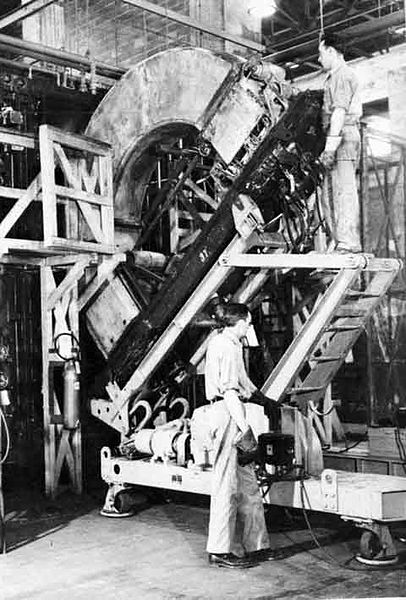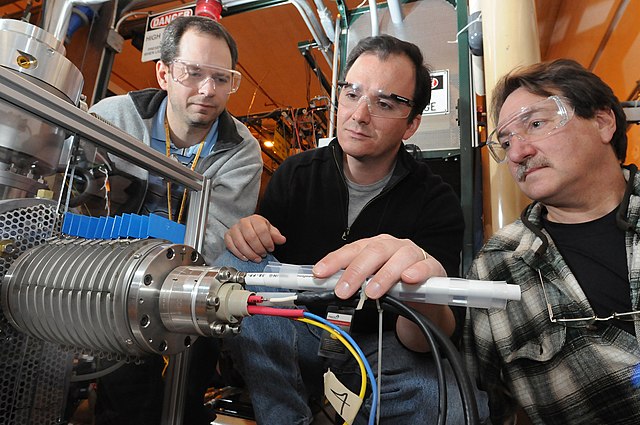Collision-induced dissociation
Collision-induced dissociation (CID), also known as collisionally activated dissociation (CAD), is a mass spectrometry technique to induce fragmentation of selected ions in the gas phase. The selected ions are usually accelerated by applying an electrical potential to increase the ion kinetic energy and then allowed to collide with neutral molecules. In the collision, some of the kinetic energy is converted into internal energy which results in bond breakage and the fragmentation of the molecular ion into smaller fragments. These fragment ions can then be analyzed by tandem mass spectrometry.
Collision cell from a Waters Xevo TQ-S triple quadrupole mass spectrometer.
Mass spectrometry (MS) is an analytical technique that is used to measure the mass-to-charge ratio of ions. The results are presented as a mass spectrum, a plot of intensity as a function of the mass-to-charge ratio. Mass spectrometry is used in many different fields and is applied to pure samples as well as complex mixtures.
Discovery of Neon Isotopes
Replica of F.W. Aston's third mass spectrometer
Calutron mass spectrometers were used in the Manhattan Project for uranium enrichment.
Surface ionization source at the Argonne National Laboratory linear accelerator





